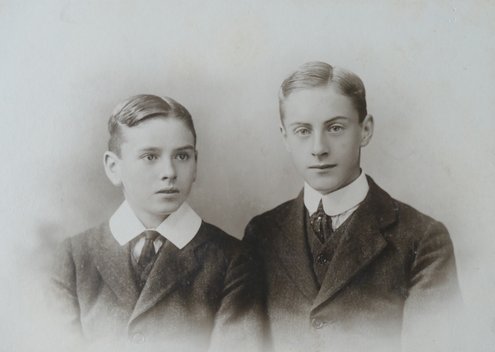SONS AT WAR
WAR SERVICE OF WILLIAM AND EDMUND GORDON
William Hyde Eagleson Gordon enlisted in the 8th Gordon Highlanders, while his brother Edmund enlisted in the 7th Seaforth Highlanders in 1914. Edmund was commissioned as a temporary Lt. on 12 September 1914. Although both brothers did not enlist in the same regiment, they both served under the so-called 'New Army' in the same brigade and mainly fought side by side in the First World War.
On 7 May 1915, the 8th Gordon Highlanders received orders that the battalion would proceed overseas shortly. The orders mentioned that transporting 106 men together with three officers would make the cross from Southhampton to Le Havre. The remaining battalion under Major Mc Lead would go to Folkstone and cross to Boulogne.
On 9 May, William in the 8th Gordons and Edmund in the 7th Seaforths arrived in France to participate in the First World War. William boarded the S.S. Victoria while Edmund crossed with the S.S. Queen and embarked both in the harbour of Boulogne, from where they went to Ostrove rest camp.
On the 11th, William and Edmund entrained at Pont de Briques, and the 8th Gordons were the first of the 'New Armies' to arrive at the front some 4 miles south of St. Omer and marched to Blendegnes. Edmund arrived later that day and marched with his battalion with the 8th Black Watch to Arques. The following five days, both battalions spend their days cleaning up, inspections, training and drills.
On the 16th, the Brigade received orders to march to Les Ciseaux. The 8th Black Watch took point, followed by the 7th Seaforths, the 8th Gordons and the 5th Camerons. On their arrival, the headquarters was put up at Staples. Soon after their arrival, orders were received to march the following day to Les Ciseaux. However, the 7th Seaforths, including Edmund, were lucky to go by motorbus. The 8th Gordons, 8th Black Watch and 5th Camerons started their march at X Road at Les Ciseaux and went via Caestre, Flere and Meteren, passing the 7th and 5th Gordon highlanders. Two days later, the Brigade received orders to go to Berthen. Upon their arrival, they received orders that instructions to the officers and men would be given in the trenches at Armentieres on the 25th and 26th from the 18th Brigade in the 6th Division.
On the 21st, the 8th Gordon Highlanders officers received orders to go to Armentieres for instructions and work details. The next day they received instructions for Sniping and bombing from the West Yorkshire regiment. It must have been during these days that Major Gordon visited both William and Edmund at the front and dinned with them in the officer's mess. Major Gordon was delighted to see his sons in good health and fine spirits. Colonel Stary Wright, the commanding officer of the 8th Gordons
, was placed in command of the 26th Brigade in the absence of Brigadier General Ritchie.
On the 23rd, the officers were guided to the trenches by the Durham Light Infantry. The next day the whole battalion marched to Armentieres and went into the trenches at 10 a.m. being part of the 18th Brigade in the 6th Division. The 8th Gordons were placed with the West Yorkshire Regiment, The Sherwood Foresters and East Yorkshire regiment and later returned to Bailleul during the evening. On the 25th, the 8th Gordons marched to the trenches and received orders to stay the night. Two men were wounded and carried out to the field hospital during the night. The battalion remained in the trenches until 5 p.m.
Just before their relief, D Company was attacked by rifle grenades, killing Sergeant Morrison and wounding private Millan. Because of the attack, the battalion only returned to Armentieres and Bailleul on the 26th.
On the 27th, orders were received that the 26th Brigade was placed in reserve to the 6th Division. The officers were instructed to go to the trenches for instructions in trench warfare, while the rest of the battalion spent the following days training and drilling. Three days later, the battalion received an order to put up labour parties at Drustam House in Houplines. Two platoons were sent, and in the afternoon, took bathing in the Houplines canal. Private Dick accidentally drowned during this action, and his body could not be recovered after many fruitless attempts. That night a man of the 8th Gordon shot a man of the Royal Irish Fusiliers who failed to answer his challenge although called upon three times.
On the 31st, Brig. General Ritchie returned from leave and took over the command of the 26th Brigade from Colonel Wright. On the 3rd of June, the 26th Brigade marched to Steenwerck to relieve the 27th Brigade and through Pont De Nieppe, Croix du Bac and Le Petit Mortier. Two days after their arrival, the brigade received orders to go southwards to La Bassée through Les Douliers, Merville Roubecqu and Buswes Lillers. The 8th Gordons placed their HQ at Ecquedeques, while the men got billets at Bellery. From 7 June to 13 June, the brigade stayed and conducted the training. On the 13th, they received orders to put up new billets at Rieux.
It was only until 24 June that the brigade received orders to march to Vendin Les Bethune and received orders to relieve the 4th Guards Btn in the 9th Division on the 26th. The commanding officers inspected the trenches on the 24th. The line that had to behold extended from Cambrin to Vermelles and the brigade was put in place at Sailly. On the 26th, the 7th Seaforths and 5th Camerons would enter the trenches and be relieved by the 8th Gordons and 8th Black Watch on the 28th. However, on the night of the 26th, the plan was cancelled, and the brigade received orders to get ready to march at an unknown destination the following day. On the 27th, the brigade was ordered to march to Lannoy and take up billets. On their arrival, no houses or farms were found, and Captain Drummond of the 8th Gordons ordered the men to proceed to Censé a Vallee next to Gonnehem and relieved here the 5th Gloucester Regiment.
On the 28th, the brigade received orders to go to the trenches near Feastburt to relieve the 21st Brigade on the 30th. The 7th Seaforths relieved the Bedfordshire regiment, and the 8th Gordons relieved the Yorkshire regiment. The relief was conducted on the 30th as planned, the brigade occupied the Old British Line, and the HQ was placed in the Orchard in the Indian Village. In the next few days, the brigade started repairing the Old British line, which was severely damaged by shelling. On 3 July, the 8th Gordons were ordered to relieve the 7th Seaforths in the Orchard via N°4 Communication Line. The relief was carried out with difficulties because sections of the 7th Seaforths left the trenches too early, causing a significant block in N° 4 Communication Line. The first thing the Gordons accomplished was repairing the telephone line after the relief. The next day the trenches of the Brigade were heavily under rifle grenade fire and enemy snipers who were very active during the day, making numerous casualties. On the 5th, the situation only worsened, and more losses were reported, including private J. Wood (medal in the Kings Messenger Collection). On top of things, the Royal Artillery had accidentally shot twelve shells in the British trenches, killing at least one man. The bombardment remained the following day, and German Aeroplanes were seen on the horizon but repelled by British Anti-Aircraft guns. The 8th Gordons were relieved by the K.O.S.B regiment on the evening of 7th July. The battalion was led to the village and met with the rest of the brigade at the Rendez-Vous at Road Junction X21 A (Les Falcons). The battalions were sent straight to the billets for a well-deserved rest.
On the 8th of July, the message was received that Lord Kitchener wanted to inspect the Brigade at 10 a.m. The men were turned out and had to clean up as best they could for the parade. After the inspection, the men returned to their billets. Shortly after, the following message was received at the HQ:
“Earl Kitchener expressed his wish that every unit should be told of the pleasure that gives him to see those whom it was possible to see and to hear so good an account of them on all sides. He wishes all ranks of the 9th Scottish division his warm good wishes for the future.”
The day after Lord Kitchener's visit, a man of the 8th Gordon Highlanders drowned while bathing, although numerous attempts were made to save him. He was buried on 10 July.
On 14 July 1915, the 26th Brigade relieved the 27th Brigade in Section C of the trenches (Le Plantin). The relief was carried out by night, and the Seaforths took over the front trench line while the 8th Gordons and the 8th Black Watch relieved the 12th Royal Scots in the "Intermediate Line". The aid post and Headquarters were stationed in ruined houses. The trenches were severely damaged, and repairs needed to be conducted. However, there were no sandbags or other materials available at the time. Although shelling was born in the following days, there was no heavy fighting, which resulted that a second communication line had been established from the Intermediate Line to the village Le Plantin. On the 16th, the Germans opened a brief hefty rifle fire on Givenchy Ridge in the night, but German signals in Green and Red Light signals called off the attack. Both artilleries were quiet the following day, and working parties could work quickly. On the 18th, the first wounded were reported in the 8th Gordon Highlanders Pte Smith, who was struck by a bullet in the shoulder. The first heavy bombardment was conducted on the 19th while a German aeroplane dropped smoke balls on the battlefield. The shelling began with an 8" Howitzer and was later followed by 8-pound artillery. The damages were minor, and the Brigade suffered no casualties. The total damage was three cows, a mule killed, and a farmhouse burned down. The next day, the Brigade was relieved after a quiet day. During the next days, the Brigade continued to send labour parties into the trenches for the repair, during one of which a German sniper killed a private. On the 24th, the labour parties were shouted upon from a giant crater: "We are Saxons, play the same!" and signalled "Wash out" with their shovels to the British snipers. On the 26th, a German mine exploded on Givenchy Ridge and left a massive crater while the earth rose to about 60 feet and felt like an earthquake. The mine probably exploded primarily because it was too far to do any harm to the British trenches. However, the British forces received wounded by flying rocks. The next day was tranquil on both sides, and orders were received that the brigade would be relieved on the 29th and the 8th Gordons would be relieved by the 2nd Coldstream Guards. The regiment marched to Locon after 15 days in the trenches and was very tired and needed a good wash and rest.
On the 1st of August, the commanding officer (Lt. Colonel Wright) and Major Mcleod went on to England to relieve. On the 3rd of August, the 8th Gordons received word that they had to relieve the Cameron Highlanders on the 6th. On the 6th, the 8th Gordons received an order to relieve the 11th Royal Scots in C2 Section and on, in turn, be relieved by the 10th A.&.S highlanders in the Intermediate line, thus making it a double relief. The officers inspected the trenches and concluded that the 27th Brigade had no work done on the trenches and that C2 Section was in shocking lousy shape. The Brigade left Le Touret and picked up C & D Company of the 8th Gordons at Festubert Cross Roads. During the relief, Lt. L. Herbert was shot. The 10th A. & S. Highlanders relieved the 8th Gordons, who moved on to the Intermediate line. On 7th August, seven men of the 7th Gordons were wounded by shelling and rifle grenades. The following day, three men were killed and four wounded, and the day after, suffered more casualties, two dead and five wounded. This was the first time the battalion suffered significant losses.
On the 10th of August, the Prince of Wales inspected the trenches of the Brigade and the day was extremely quiet, with no sniping or artillery fire. Two days later, the 8th Gordon suffered two killed and five wounded while carrying out labour construction. On the 16th, a thunderstorm and heavy rain caused the trenches to be very slippery and muddy. The 8th Gordons were relieved by the Cameron Highlanders in very difficult manners. The brigade went to the divisional rest area at Le Vert Lannot (North of Locon) and moved into the Army corps reserve at Carvin (Northeast of Robecq). On the 18th, the news was brought that Lord Kitchener would inspect the 9th Division the following day in Busnes. The parade was held as scheduled, and the men returned to camp and played football in the afternoon.
On the 20th of August, a horrifying report came in that four children were injured by a bomb which was left on the Brigade bombing field. The investigation pointed out that the bomb was not from the 8th Gordon Highlanders. The Brigade conducted disinfection, training, bombing practice and sports during the following ten days. On the 30th of August, the Brigade received orders to march to Bethune and from there to Vermelles. After their arrival at Bethune, the brigade Bethune marched to Annequin on 2 September and met with the Guides of the 10th A.& S. Highlanders who the 8th Gordons had to relieve in trenches of Y3 opposite Hohenzollern redoubt. The Guides continually kept going wrong, which made the relief very hard and even interfered with those of the 8th Black Watch, which was at the front resulting in constant blocking of the road. The relief conducted hours, and the General of the 10th A. & S. was very annoyed! On their arrival, they found the trench in very bad shape, and a ton of work had to be done.





